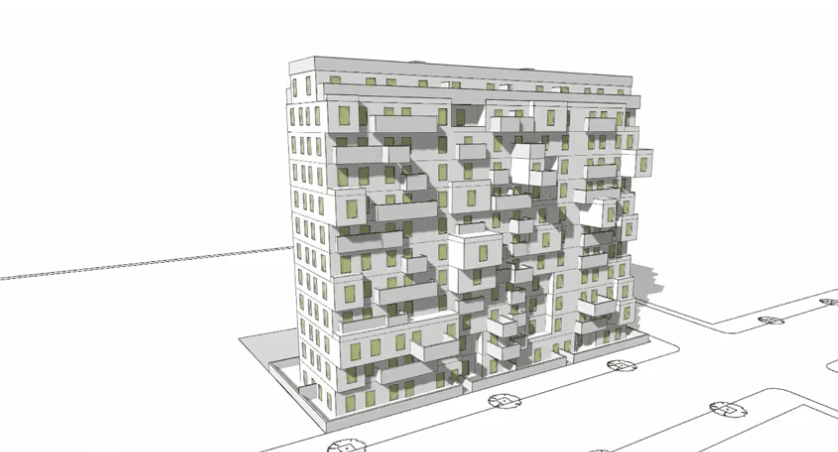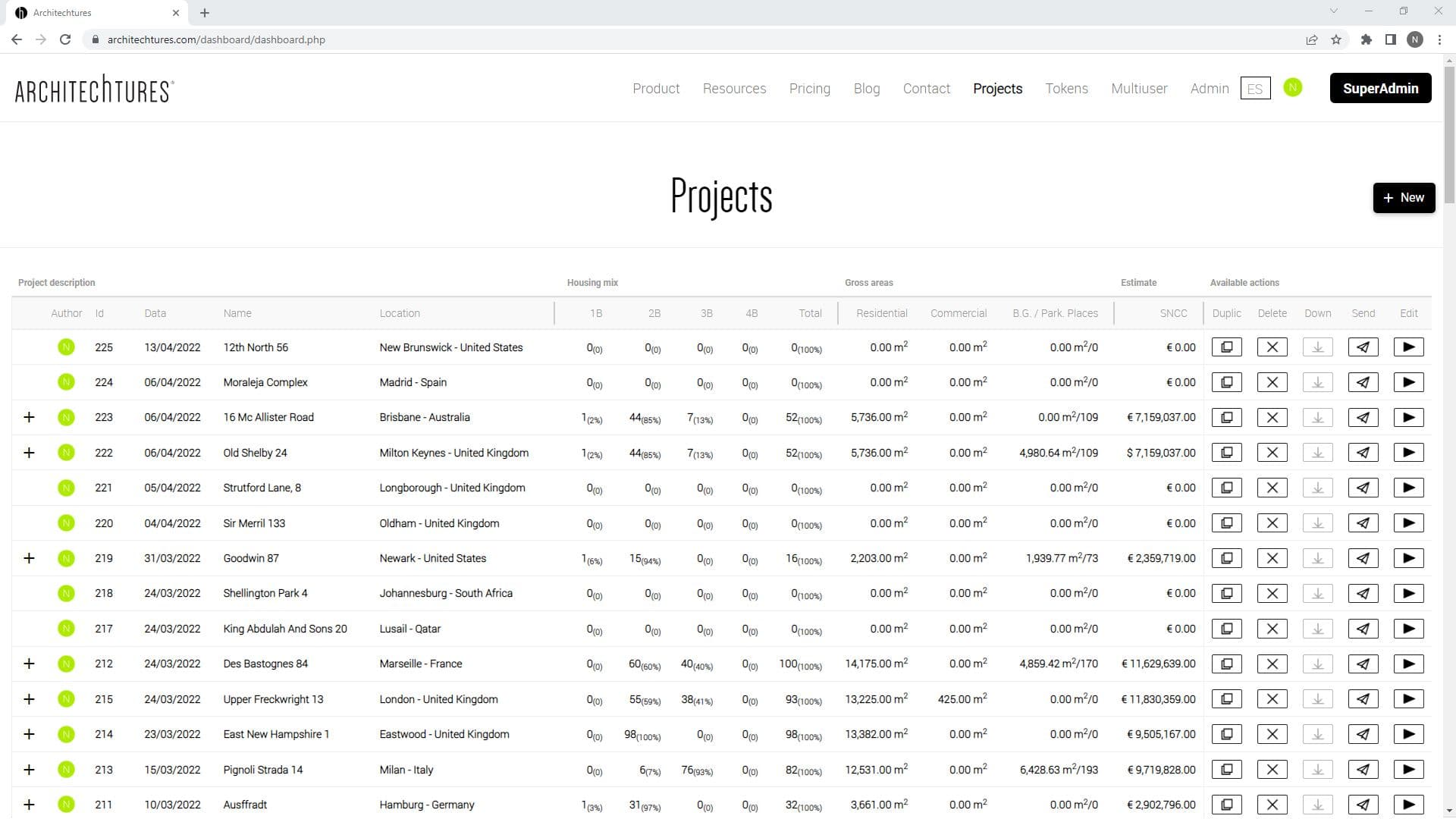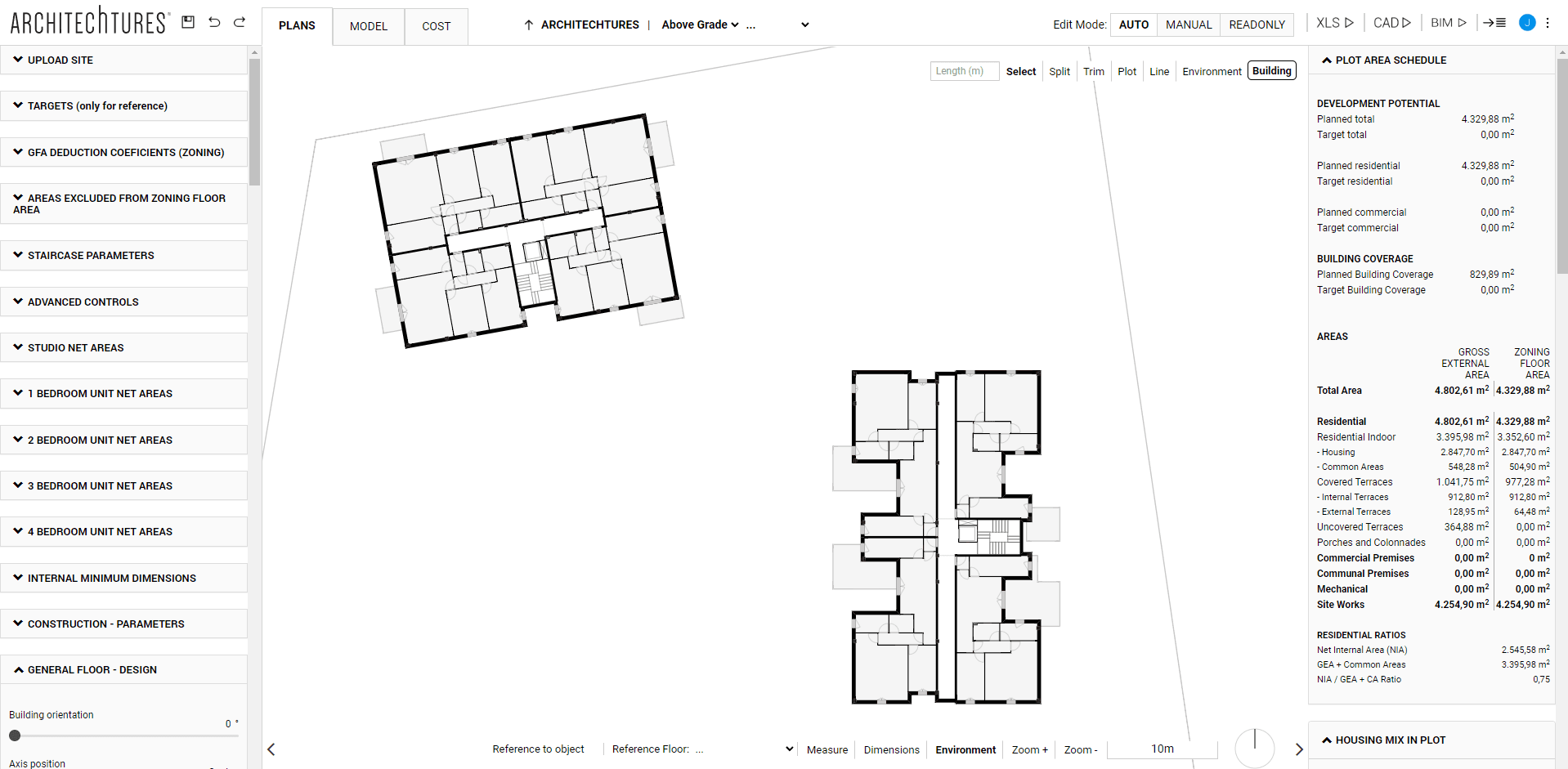Parametric Design, Generative Design and AI-Aided Design.
Posted 9/27/2023 in Technology

We introduce you to the new trends in the world of design automation applied to the architecture industry.
We introduce you to the new trends in the world of design automation applied to the architecture industry.
In a previous blog post we explained how Artificial Intelligence (AI) differs from other types of traditional explicit programming. In this post we will explain other trends in automation such as parametric or computational design and generative design and how these technologies: parametric, generative and AI-aided design with Machine Learning, are applied in the architectural design industry and how each behaves.
Parametric design or computational design is the coding of a design by programming the geometric rules that generate it and defining its input parameters, so that by introducing other parameters a new design is generated. This technique would correspond to the traditional programming applied to the world of design (programming by rules). As said in a previous post, this technique is efficient in the case of delimited problems, those that fit within the rules that define its algorithm, but it is difficult to apply in order to achieve a scalable solution that is able to respond to the multiple parameters and interdependencies of these in the real world, which would require a highly complex and exponential development.
On the other hand, Generative Design is a design optimization technique in which evolutionary search or optimization algorithms are applied on a parametric design to choose the input parameters that best meet a given set of objectives.
Both Generative Design and Machine Learning involve aided design processes, i.e., we do not draw geometry manually, but ask a program to generate that geometry for us by introducing parameters and objective data.
The main difference between these two techniques is that, in the Generative processes, the designer introduces at the beginning of the process the parameters and constraints of the design to let the system perform the optimization process and return a set of best solutions (when we work with multiple objectives, the optimal solutions are multiple depending on the combination of objectives that optimizes each result, this set of optimal solutions is what is called Pareto front). Thus, the design process is a process with essentially two steps, the introduction of data into the system and the selection of the result from the set of optimal solutions offered by the system. That is why human intervention in this process is limited to the beginning and the end, being a closed design process with a limited result, since the system offers the solution present in its code that best fits once all the data has been entered.
In the case of AI-aided design, we no longer work in a closed process, but in a procedure where the result is open, it is generated as the user enters the data and incrementally arrives at the appropriate solution, making changes dynamically, in a collaborative manner between man and machine.
However, Generative processes are based on the exploration of a parametric design in whose code the geometry generation processes are made explicit from the user’s inputs, performing the search process after the introduction of the parameters.
The generative design works very well for simple systems, but not for complex systems with many inputs and cross-interrelation between them where the combinations are practically unlimited. Generative solutions suffer more and more as complexity increases until they become so cumbersome that they are no longer viable.
On the other hand, when we use Machine Learning to generate the design in real time (milliseconds) the result is unpredictable but successful (optimal); for this we only have to dynamically introduce the data set that the resulting designs must comply with, although in this case the design is not predefined (coded). This is because the AI learns prior to its use in the design, processing huge databases (AI is always associated with Big Data) from which it draws its own conclusions. In the case of Architechtures these are abstract databases of geometries and relationships between them. This process allows AI to shine in complex cases, being able to optimize or find ideal compromises between a multitude of inputs in real time to multiply people’s design capacity.
AI, and more specifically, Machine Learning, opens a new path with great development potential for the future of Architecture, drastically boosting both the designer’s creativity and the objectivity of the results.


